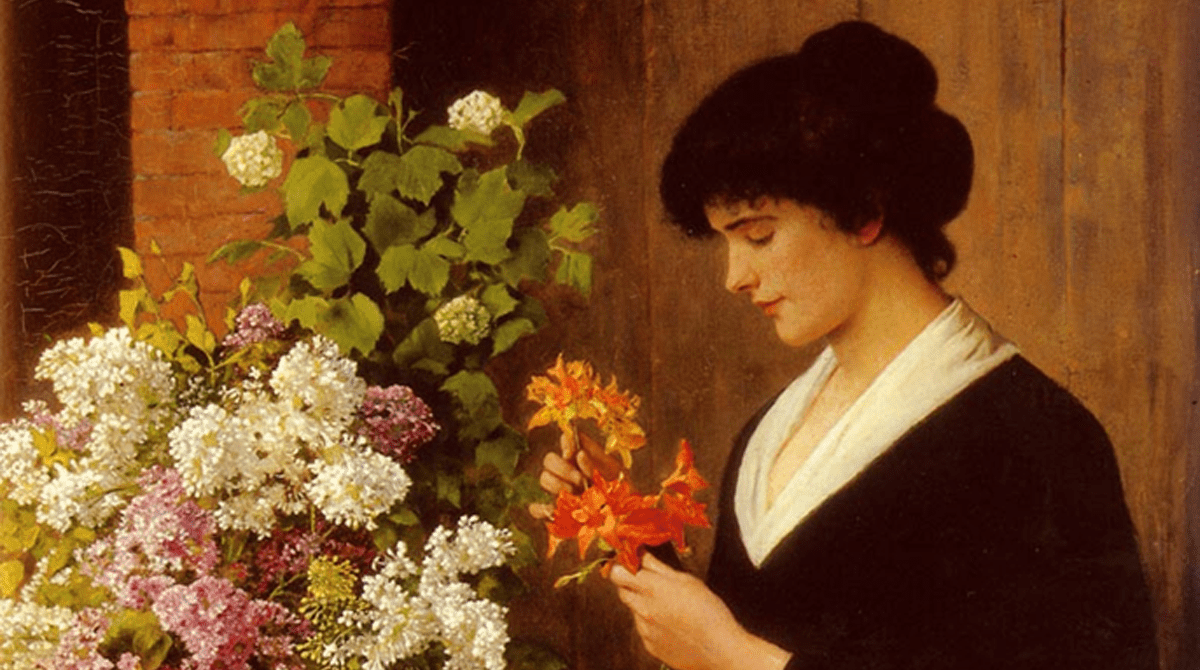The Emergence of Flower Arrangement

Flower arrangements have a rich and varied history, with stops all over the world stretching back thousands of years. So let's get started and discover everything we can about flower arrangement history!
1. The Egyptian Period ca. 2800 BCE – 28 BCE
_11zon.jpg)
According to archaeological evidence, the ancient Egyptians were the first civilization to begin arranging flowers for ornamental purposes. Indeed, wall carvings dating back to 2,500 BCE reveal pictures of cut flowers in jars. These floral arrangements were most commonly used for burials and funeral processions.
Flowers were also thought to have symbolic and religious implications by the ancient Egyptians, with distinct flowers associated with various gods and mythology. Water lilies, for example, were the sacred flower of the Egyptian goddess Isis.
Popular flowers during this era: Lotus blossom, roses, violets, jasmine, lilies, narcissus, acacia
2. The Greek Period ca. 600 BCE – 46 BCE
_11zon.jpg)
The ancient Mediterranean empires are considered to have been the first to employ widespread flower growing for decorative purposes. And it's simple to see why: they were completely enthralled with floral arrangements, which they used in everything from marriages and funerals to banquets and rites.
Unlike the ancient Egyptians, however, the Greeks and Romans preferred wreaths and garlands over vases. These wreaths and garlands were typically embellished with traditional flowers and earthy greenery, most commonly acorns, oak leaves, laurel, ivy, bay, and parsley. Laurel wreaths were specially awarded to ancient Olympic winners and military commanders in spectacular victory parades.
The ancient Romans were likewise known to be madly in love with roses. At "Hour of Rose" dinner parties, Romans sometimes covered the entire floor with rose petals, measuring up to one foot in depth (now that's a dinner party we'd love to attend!).
Aside from roses, these two ancient societies adored hyacinths, honeysuckle, violets, larkspur, marigolds, tulips, lilies, and orchids.
Popular flowers during this era: Roses, ivy, oak leaves, larkspur, marigold, and decorative herbs like rosemary, basil, and thyme.
3. The Middle Ages 476 AD – 1400 AD
_11zon.jpg)
Following the fall of the Roman Empire, flower arrangement in Europe reverted to a specialized skill, often conducted only by monks with access to gardens and often gathered wildflowers. Flowers, on the other hand, gradually made their way back into the dominant culture, with blossoms appearing in paintings, literature, and other artwork.
During the medieval period, Crusaders brought back new and rare flowers from the Middle East.
4. The Renaissance Period 1400 AD – 1600 AD
_11zon.jpg)
In terms of living standards and education, Renaissance individuals fared far better than their medieval counterparts. As a result, they could enjoy some of life's finer luxuries, such as beautiful flower arrangements. Not only did these people like floral design, but an entire art genre based on paintings of meticulous and beautiful flower arrangements arose.
Popular flowers during this era: lily of the valley, violets, wreaths, primroses, carnations, roses, ivy, laurel, dianthus, daisies.
5. (English) – The Victorian Era ca. 1837 AD – 1901 AD
_11zon.jpg)
Victorians were the most flower-obsessed of all floral arrangement practitioners on this list. Flowers were seen as a symbol of elegance and sophistication—the most fashionable statement a person could make.
However, the Victorians had a distinct floral design style. Instead of modest, meticulously planned arrangements, Victorians tightly packed cut flowers into vases with an apparent disregard for complementary hues, minimalism, or regularity. The designs were frequently asymmetrical, chaotic, noisy, and featured various color changes.
But that's just the tip of the iceberg regarding the Victorian obsession with flowers. Victorians developed an entire "Language of Flowers" to send secret messages expressing sentiments, intentions, and ideas to others. Speaking about particular topics or approaching a love interest were deemed impolite at the time.
Popular flowers during this era: Madonna lily, bleeding heart, carnation, dahlia, sweet pea, hydrangea, camellia, lilies, roses.
6. Modern Period ca. 1910 – Present
_11zon.jpg)
The Victorian style gave way to the New Art style. It was during this period that smaller flower bouquets for the home were popular, increasing people's desire to have similar flower arrangements in their homes and decor. Today, the new Dutch Style, which emphasizes naturalistic garden arrangements, is becoming increasingly prominent, as is a revival of hand-tied flowers and tropical materials.
As you can see, the history of floral arrangements is really fascinating. And, we're not sure about you, but we think it adds a lot of charm to flowers Abu Dhabi in general. With that being said, why not head over to Flowershop.ae and pick up stunning flowers Abu Dhabi online curated lovingly by one of our artisan florists?
We're confident you'll love our beautiful range of flowers Abu Dhabi!










